In the realm of gardening, the allure of Hostas is undeniable. Their vibrant foliage and adaptability make them a favorite among enthusiasts. Yet, the question persists: How long can Hostas be out of the ground without compromising their health? In this comprehensive guide, Gina Farm delve into the intricacies of hosta care, exploring the optimal duration for their removal from the soil and offering expert insights to help you nurture these botanical beauties.
Understanding Hostas: A Brief Overview
Before delving into the temporal aspects of hosta care, let’s briefly revisit what makes these plants so beloved. Hostas, renowned for their lush leaves and tolerance to shade, thrive in various climates, making them a versatile addition to any garden. With numerous cultivars available, each boasting unique characteristics, Hostas have earned their reputation as the go-to perennial for both novice and seasoned gardeners alike.
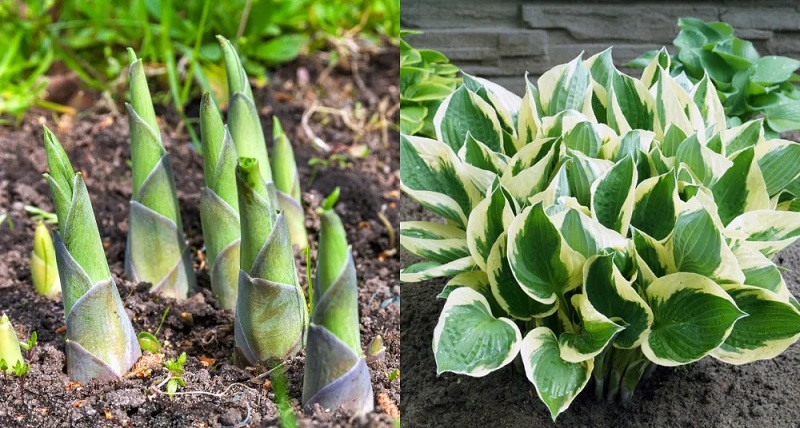
The Ideal Conditions for Hostas
Hostas are popular perennial plants known for their attractive foliage and shade tolerance. To ensure the optimal growth and health of Hostas, it’s essential to provide them with the right conditions. Here are the ideal conditions for growing Hostas:
Shade or Partial Shade:
Hostas thrive in shade or partial shade. While some varieties can tolerate more sun, most prefer filtered sunlight or dappled shade. Too much direct sunlight can scorch their leaves.
Well-Drained Soil:
Hostas prefer moist, well-drained soil. They are not tolerant of waterlogged conditions. Sandy loam or loamy soil with good organic matter content is ideal. Adding organic mulch can help retain soil moisture.

Soil pH:
Hostas generally prefer slightly acidic to neutral soil pH ranging from 6.0 to 7.5. Amending the soil with organic matter like compost can improve its structure and fertility.
Watering:
Keep the soil consistently moist but not waterlogged. Water Hostas deeply, especially during dry periods. Mulching around the plants helps retain soil moisture and regulates temperature.
Spacing:
Plant Hostas with enough space between them to allow good air circulation. This helps prevent diseases and ensures each plant receives adequate light and nutrients.
Temperature:
Hostas are cold-hardy plants and generally prefer cooler temperatures. While they can withstand a range of climates, extreme heat may cause some varieties to scorch. Mulching can help regulate soil temperature.
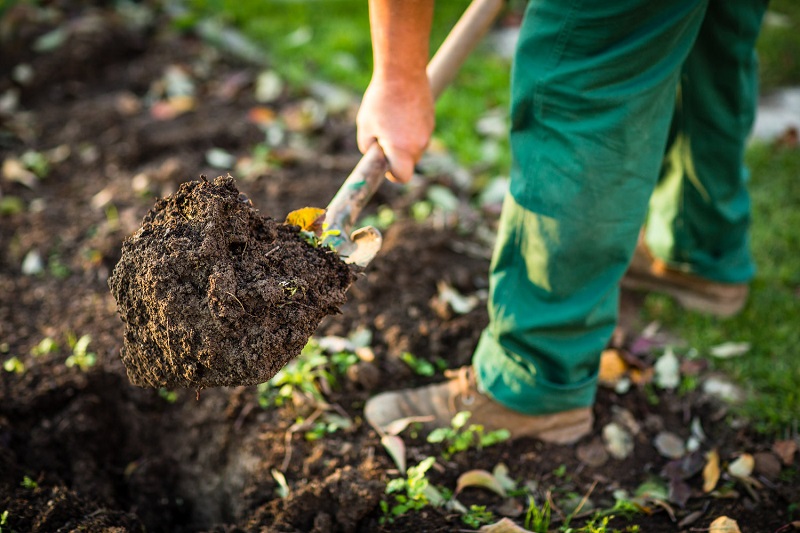
Fertilization:
Hostas benefit from regular feeding. Use a balanced, slow-release fertilizer in the spring as new shoots emerge. Avoid excessive use of high-nitrogen fertilizers, as this can encourage lush foliage at the expense of flower production.
Division:
Hostas can be divided every few years to maintain their vigor. The best time for division is in early spring as new shoots are emerging, or in early fall before the plants go dormant.
Pest and Disease Control:
Keep an eye out for slugs and snails, which are common pests that can damage hosta leaves. Use organic or chemical slug controls if necessary. Proper spacing and good air circulation can help prevent fungal diseases.
Winter Care:
In colder climates, apply a layer of mulch in the fall to protect the plants during winter. This is especially important for newly planted Hostas. Mulch helps regulate soil temperature and prevents frost heaving.
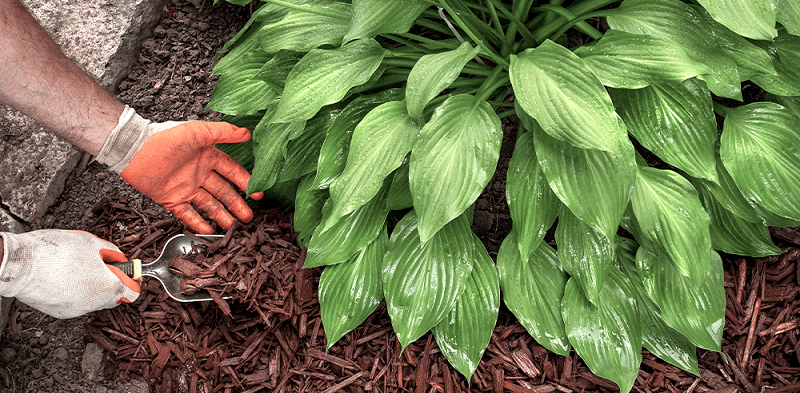
By providing the ideal conditions mentioned above, you can enjoy healthy and vibrant Hostas in your garden. Keep in mind that specific varieties may have slightly different preferences, so it’s beneficial to research the particular needs of the Hostas you are growing.
How Long Can Hostas Be Out Of The Ground?
Hostas, like many other perennial plants, can withstand being out of the ground for a short period if proper care is taken. However, the longer they are out of the ground, the more stress they will experience and the lower their chances of successful transplantation.
If you need to move or transplant Hostas, here are some guidelines for how long they can be out of the ground:
Short-Term Exposure:
If you’re planning to transplant Hostas within a day or two, they should be fine as long as you keep their roots moist. Dig them up with as much soil around the roots as possible and place them in a temporary container or wrap the roots in damp burlap.
Moderate Duration:
If you need to keep Hostas out of the ground for more than a couple of days but less than a week, it becomes more critical to keep the roots consistently moist. Store them in a cool, shaded area and consider covering the roots with damp newspaper or burlap. Water them periodically to prevent drying.
Extended Periods:
Ideally, Hostas should be replanted as soon as possible. If you must keep them out of the ground for an extended period (more than a week), consider potting them temporarily. Use a container with well-draining soil, water thoroughly and keep the plants in a shaded location. Monitor moisture levels closely.
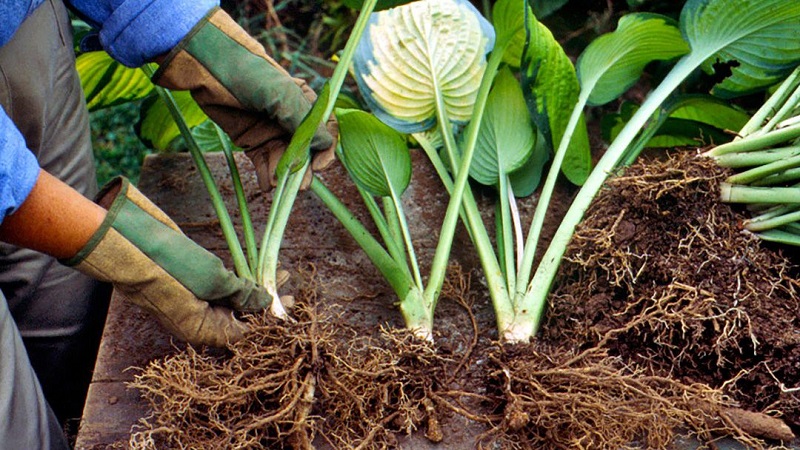
The key is to minimize stress on the plant by preserving the health of the roots. During the time Hostas are out of the ground, they are more susceptible to drying out and environmental stress.
When transplanting Hostas:
- Dig Properly: Dig a wide hole around the plant to minimize root disturbance. Try to keep as much soil around the roots as possible.
- Water Well: Water the Hostas thoroughly before and after transplanting to reduce transplant shock.
- Plant Quickly: If you need to keep Hostas out of the ground temporarily, aim to replant them as soon as possible.
- Trim Foliage: Trimming back some of the foliage can reduce stress on the plant and help balance the water loss through transpiration.
Always consider the specific needs of the hosta variety you are working with, as some may be more resilient than others. If Hostas are out of the ground for an extended period, closely monitor their health and be prepared for potential setbacks in growth and establishment.
Best Practices for Transplanting Hostas
Transplanting Hostas can be a straightforward process if you follow some best practices. Here’s a step-by-step guide to ensure a successful hosta transplant:
Choose the Right Time:
The best time to transplant Hostas is in early spring or late fall when the weather is cooler and the plants are not actively growing. This reduces stress on the plants.
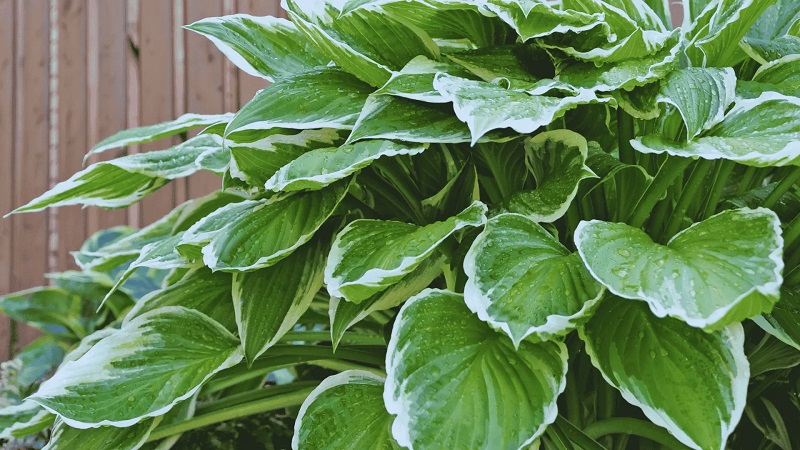
Watering:
Water the Hostas thoroughly a day or two before transplanting. Moist soil helps the plant handle the stress of being moved.
Prepare the New Site:
Dig the new planting hole before you dig up the hosta. The new hole should be wide and deep enough to accommodate the plant’s roots comfortably. Add organic matter to the soil if needed.
Digging Up the Hosta:
Use a sharp spade or shovel to dig a wide circle around the hosta, starting about 6 inches away from the base. Dig deep enough to get most of the root ball. Lift the hosta gently, trying to keep the soil intact around the roots.
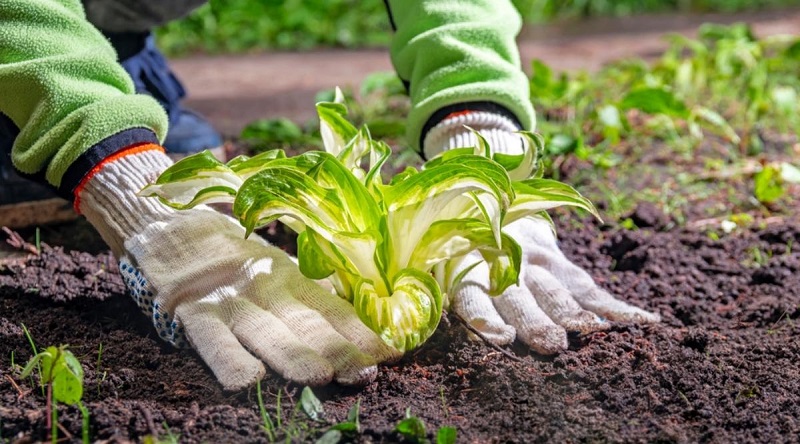
Root Inspection and Trimming:
Inspect the roots for any damage or signs of disease. Trim any damaged or excessively long roots with clean, sharp pruners. Healthy roots are usually firm and white.
Replant Immediately:
Transplant the hosta into the prepared hole as soon as possible. Place it at the same depth as it was in the previous location. Backfill the hole with soil and water well.
Watering After Transplanting:
Water the transplanted hosta thoroughly. Keep the soil consistently moist for the first few weeks after transplanting to help the plant establish itself.

Mulching:
Apply a layer of mulch around the base of the transplanted hosta to help retain moisture and suppress weeds. Leave a small gap between the mulch and the base of the plant to prevent issues with crown rot.
Fertilizing:
While it’s generally good to avoid heavy fertilization immediately after transplanting, you can apply a balanced, slow-release fertilizer in the spring as the hosta starts to show new growth.
Monitor and Patience:
Keep an eye on the transplanted hosta for signs of stress, such as wilting or yellowing leaves. Be patient, as it may take some time for the plant to acclimate to its new location.
Division (Optional):
If you’re dividing Hostas during transplanting, ensure that each division has enough roots and foliage to support itself. Follow the same planting and care instructions for each division.
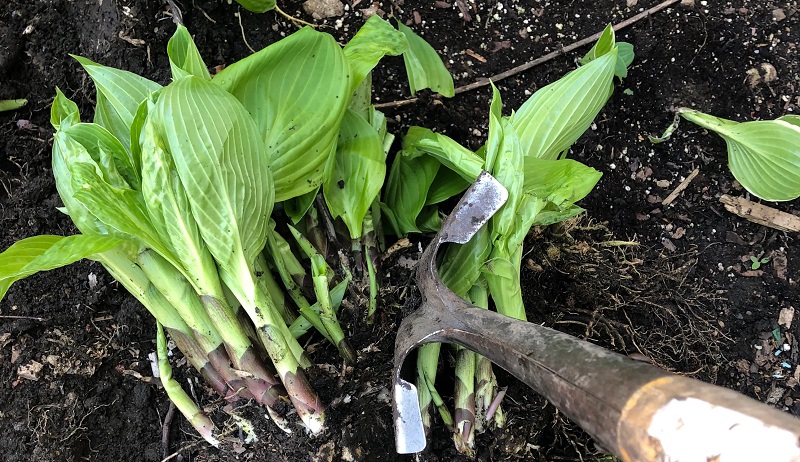
These best practices, you can minimize stress on the Hostas and increase the likelihood of a successful transplant. Remember that individual varieties may have specific needs, so it’s beneficial to research any particular requirements for the Hostas you are working with.
Conclusion: Nurturing Hostas for Long-Term Success
In the quest to maintain the health and vibrancy of Hostas, understanding the delicate balance of timing and technique is paramount. While the general guideline suggests keeping Hostas out of the ground for a few hours, meticulous planning, gentle handling and adherence to best practices significantly contribute to their successful transplantation.
Embracing the nuances of hosta care elevates your gardening endeavors, ensuring these beloved perennials grace your landscape with enduring beauty. By combining a thorough understanding of their needs with meticulous execution, you not only answer the question of how long Hostas can be out of the ground but also set the stage for their flourishing presence in your garden. Hopefully the article “How Long Can Hostas Be Out Of The Ground?” has helped you learn more useful information about this plant.